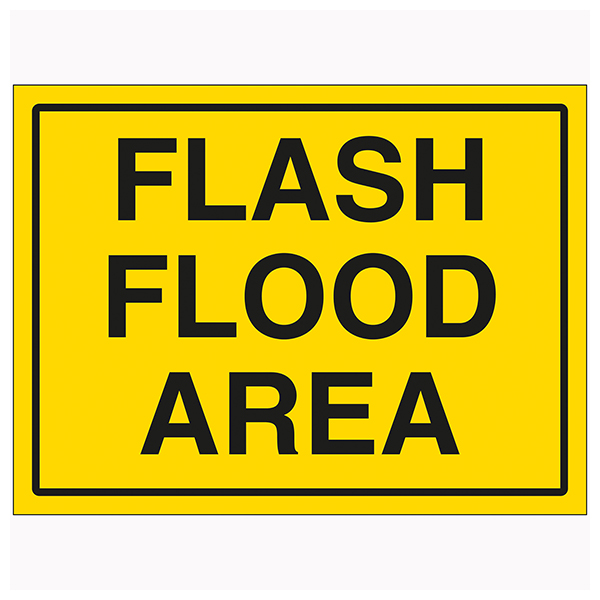Recognizing The Signs Of A Flash Flood Emergency

Table of Contents
Rapidly Rising Water Levels
One of the most obvious signs of an approaching flash flood is the rapid increase in water levels. This doesn't just apply to major rivers; even seemingly calm streams can become raging torrents in a matter of minutes. Observing water levels, even in areas that typically have low flow, is essential for early detection.
Sudden Increases in Stream or River Flow
A significant and sudden increase in the flow rate of a stream or river is a major warning sign. What might have been a gently flowing creek can quickly transform into a powerful, destructive force during a flash flood.
- Look for unusually fast-moving water. Faster than normal currents indicate a surge of water.
- Note a significant increase in the water's depth and width in a short period. Even a small increase over a short time can be a critical warning.
- Observe debris (branches, logs, etc.) being carried downstream at high speeds. This is a clear indicator of increased water velocity and potential danger.
Water Overtopping Banks or Culverts
Water exceeding its normal boundaries is a major red flag. Pay close attention to low-lying areas and bridges, as these are often the first to be impacted.
- Pay close attention to low-lying areas and bridges. These areas are particularly vulnerable to flash flooding.
- Look for water accumulating quickly on roads and in normally dry areas. This indicates that drainage systems are overwhelmed.
- Observe any signs of erosion or structural damage near water sources. This could signal an imminent flood.
Weather Indicators of an Impending Flash Flood
Intense rainfall, particularly in a short amount of time, is a primary trigger for flash floods. Understanding weather patterns and monitoring forecasts is critical.
Intense Rainfall
Heavy rainfall, especially when the ground is already saturated from previous rain, significantly increases the risk of flash floods.
- Pay attention to weather alerts and warnings. Heed all official warnings and advisories.
- Monitor rainfall intensity – even light rain in already saturated ground can lead to flooding. Don't underestimate the cumulative effect of rainfall.
- Be aware of the potential for flash floods even during seemingly mild weather if the ground is already saturated. The ground's capacity to absorb water is crucial.
Sudden and Heavy Thunderstorms
Localized, intense thunderstorms can quickly overwhelm drainage systems, leading to rapid rises in water levels.
- Monitor radar images and storm tracking apps. These tools can provide real-time updates on storm movement and intensity.
- Be particularly cautious during afternoon and evening thunderstorms, which are often the most intense. These are peak times for thunderstorm activity.
- Understand that thunderstorms can move rapidly, bringing intense rainfall to unexpected areas. Flash floods can occur far from the apparent center of a storm.
Unusual Sounds and Sights
Beyond visual cues, listen for unusual sounds and observe changes in the water's appearance.
Rumbling Sounds from Upstream
A rumbling sound from upstream can indicate a sudden release of water from a dam or other source.
- Pay attention to unusual noises, like roaring water. This could signify a surge of water rushing downstream.
- Be aware of the possibility of upstream dam failures or other unforeseen events. These can trigger catastrophic flash floods.
- If you hear unusual rumbling sounds near water sources, evacuate immediately. This is a critical warning sign requiring immediate action.
Rapidly Changing Water Color
Muddy or discolored water can indicate high sediment levels due to intense runoff.
- Note a sudden change in water clarity or color. A dramatic shift in color is a clear warning sign.
- This is a sign of significant sediment movement, often associated with flash flooding. The increased sediment is carried by the fast-moving water.
- Be cautious of debris carried in floodwaters, as it can be dangerous. Flooding water carries all sorts of debris, making it hazardous.
Conclusion
Being prepared and knowing how to recognize the signs of a flash flood is vital for your safety. Remember the key indicators: rapidly rising water levels, intense rainfall, unusual sounds, and changes in water color. By staying informed about weather conditions, monitoring water levels, and heeding official warnings, you can significantly reduce your risk. If you see any of these signs of a flash flood, act quickly – evacuate immediately to higher ground and follow the instructions of emergency personnel. Don't underestimate the power of a flash flood; your awareness and prompt action can save lives. Learn more about flash flood safety and preparedness in your area to protect yourself and your family from a flash flood emergency.

Featured Posts
-
 Severe Thunderstorms Prompt Flash Flood Warning In Cayuga County
May 25, 2025
Severe Thunderstorms Prompt Flash Flood Warning In Cayuga County
May 25, 2025 -
 Kazni Za Mertsedes Vo Bakhrein Pred Pochetokot Na Trkata
May 25, 2025
Kazni Za Mertsedes Vo Bakhrein Pred Pochetokot Na Trkata
May 25, 2025 -
 Amsterdam Exchange Suffers 11 Drop Since Wednesday Three Days Of Losses
May 25, 2025
Amsterdam Exchange Suffers 11 Drop Since Wednesday Three Days Of Losses
May 25, 2025 -
 Explore Dr Terrors House Of Horrors What To Expect
May 25, 2025
Explore Dr Terrors House Of Horrors What To Expect
May 25, 2025 -
 Coriolanus Snow Casting Ralph Fiennes A Contender Fan Preferences For Kiefer Sutherland
May 25, 2025
Coriolanus Snow Casting Ralph Fiennes A Contender Fan Preferences For Kiefer Sutherland
May 25, 2025
